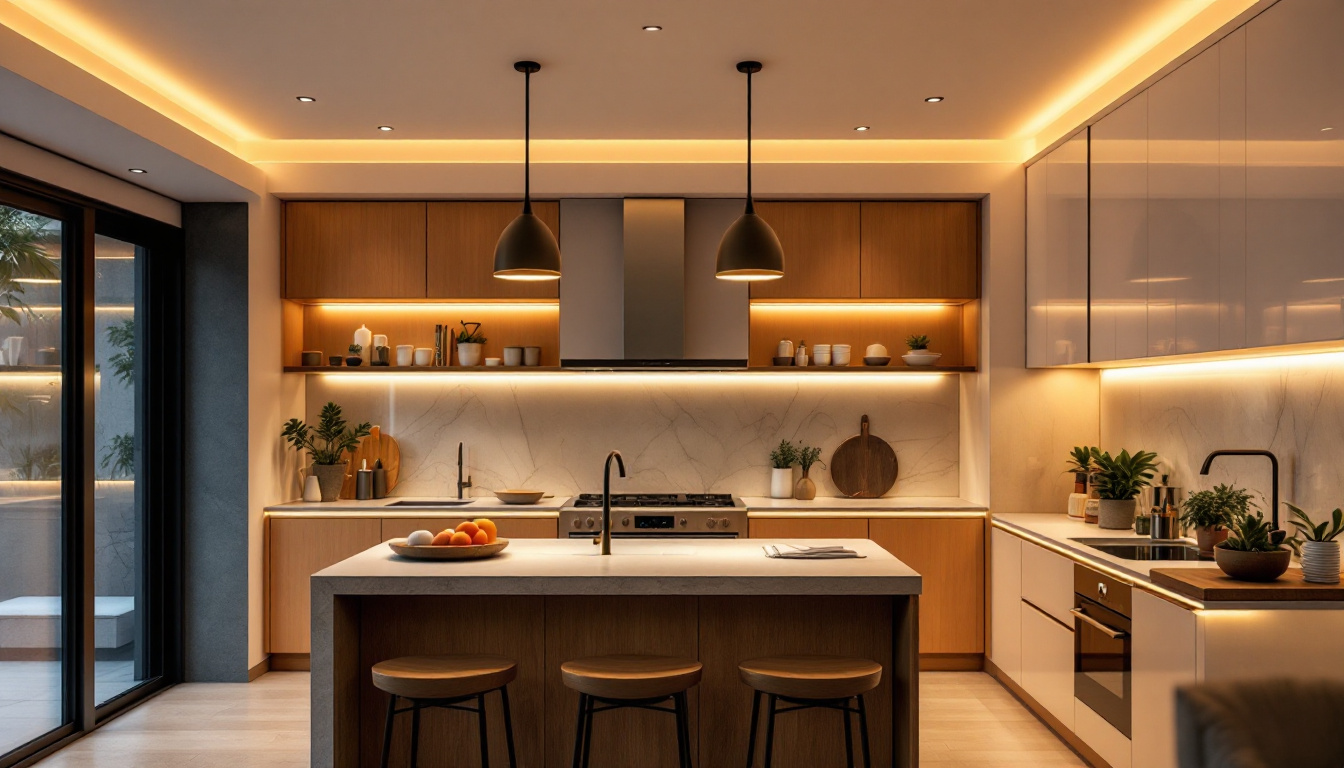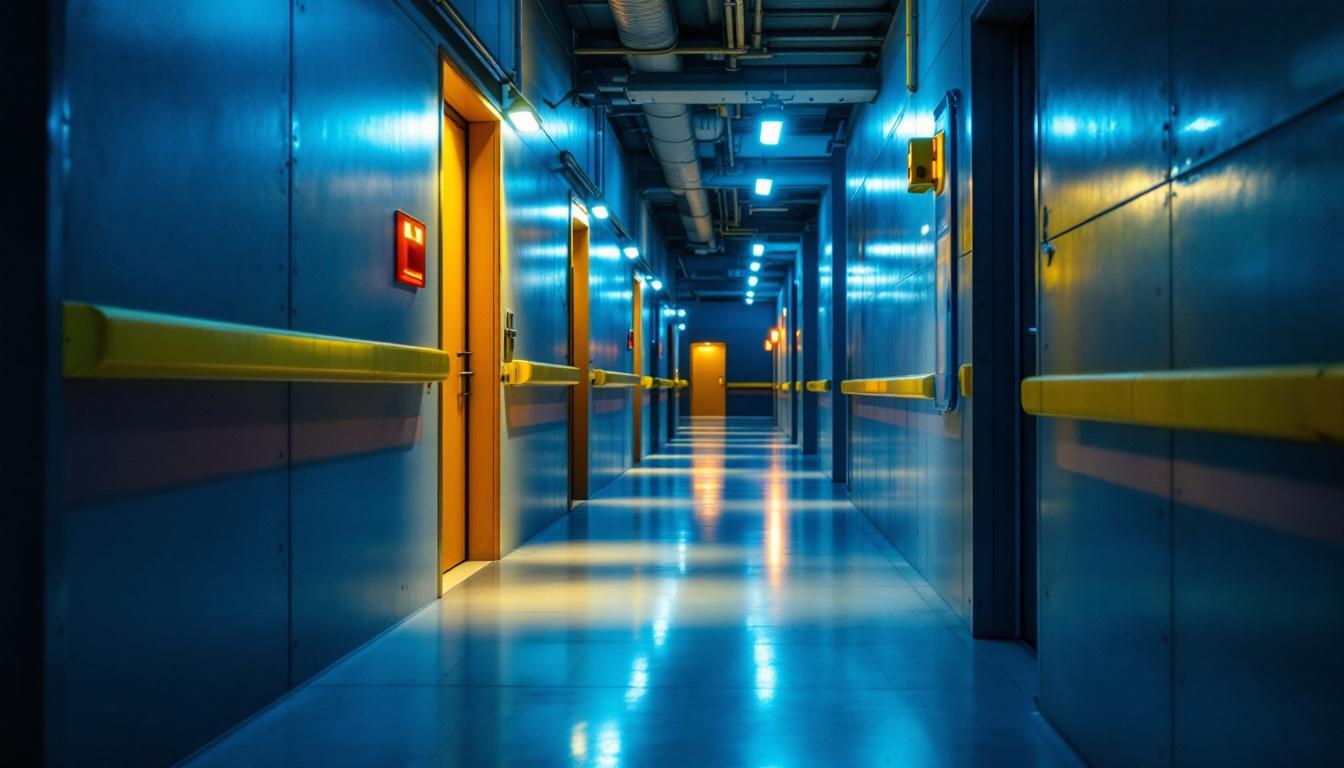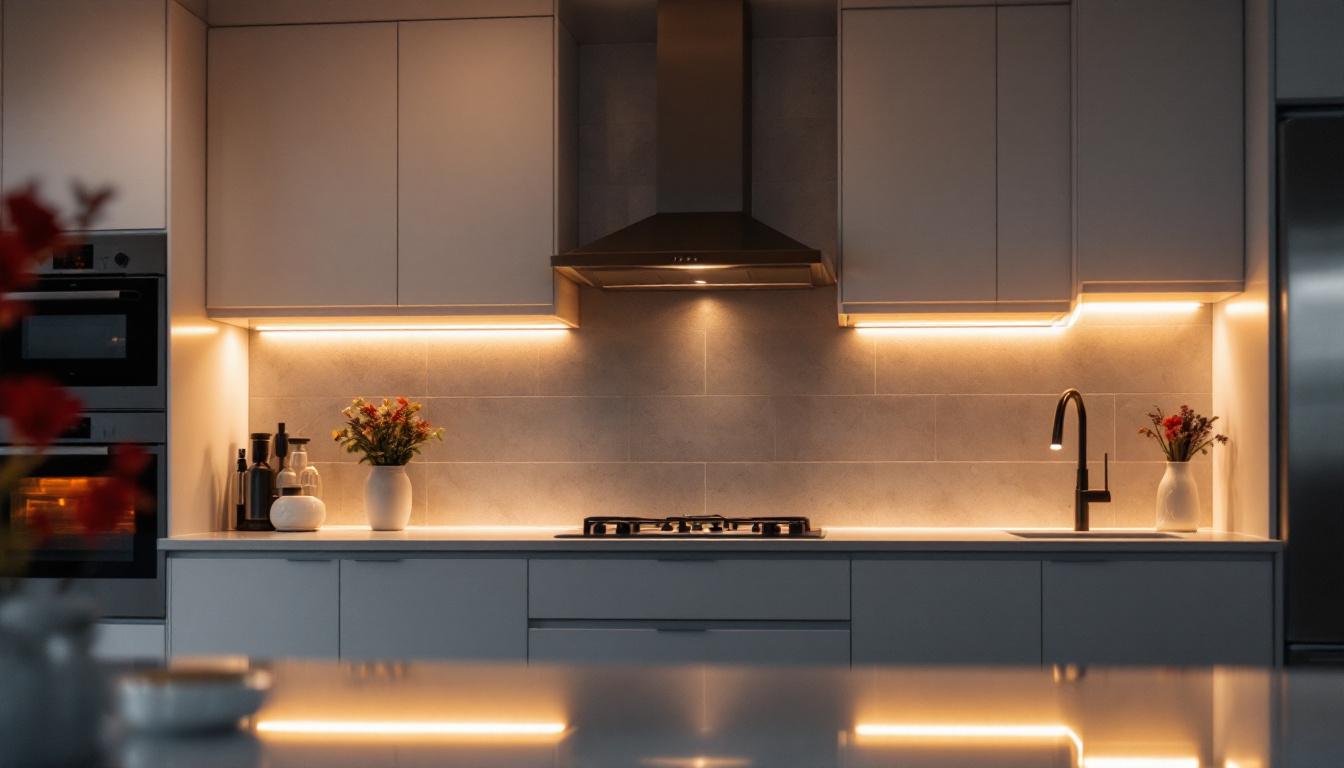
Indirect lighting has become a popular choice in modern interior design, offering a subtle and sophisticated way to illuminate spaces. However, the installation of indirect lighting can present unique challenges for lighting contractors. Understanding these challenges and how to navigate them is essential for ensuring a successful project. This article explores key considerations, common pitfalls, and best practices that can help lighting contractors avoid issues during the installation of indirect lighting.
Indirect lighting refers to light that is directed towards a surface, such as a wall or ceiling, rather than being emitted directly into a space. This technique creates a soft, diffused glow that enhances the ambiance without the harshness often associated with direct lighting. It is commonly used in residential and commercial settings, providing a versatile solution that can be tailored to different environments.
The advantages of indirect lighting are numerous. First and foremost, it helps to reduce glare, creating a more comfortable atmosphere for occupants. This is particularly important in spaces where people spend extended periods, such as offices or living rooms. Additionally, indirect lighting can enhance architectural features, drawing attention to design elements without overwhelming them.
Moreover, energy efficiency is another significant benefit. By using LED fixtures and strategically placing light sources, contractors can create effective lighting solutions that consume less energy compared to traditional lighting methods. This not only lowers utility costs but also aligns with growing sustainability goals.
Indirect lighting can be utilized in various applications, including cove lighting, wall sconces, and recessed fixtures. Each application serves a different purpose and can be adapted to meet the specific needs of a project. For instance, cove lighting is often used in ceilings to create a halo effect, while wall sconces can provide accent lighting that highlights artwork or architectural details.
In commercial spaces, indirect lighting can be employed to create a welcoming environment in retail stores, restaurants, and office buildings. By understanding the unique requirements of each space, lighting contractors can design and implement effective indirect lighting solutions that enhance the overall aesthetic and functionality.
Effective planning is crucial for the successful installation of indirect lighting. This phase involves assessing the space, determining the lighting design, and selecting appropriate fixtures. A well-thought-out plan can help contractors avoid common pitfalls that may arise during installation.
Before any installation begins, it is essential to conduct a thorough assessment of the space. This includes evaluating the dimensions, existing lighting conditions, and the intended use of the area. Understanding these factors allows contractors to make informed decisions about the type and placement of indirect lighting fixtures.
Additionally, it is important to consider the color scheme and decor of the space. Different colors can affect how light is perceived, so choosing fixtures that complement the existing design can enhance the overall effect of the lighting.
The design of the indirect lighting system should align with the overall aesthetic and functional goals of the project. Contractors should collaborate with designers and architects to create a cohesive lighting plan that integrates seamlessly with the space. This may involve selecting fixtures that match the style of the room, as well as determining the optimal placement for maximum effect.
Another critical aspect of design is the light output. Contractors must ensure that the chosen fixtures provide adequate illumination without creating hotspots or shadows. This requires a careful balance of fixture placement and wattage, which can be achieved through simulation software or lighting design tools.
The selection of fixtures is a pivotal aspect of indirect lighting installation. The right fixtures not only enhance the aesthetic appeal but also play a significant role in the functionality of the lighting system. Contractors should consider various factors when choosing fixtures for indirect lighting applications.
There are several types of fixtures suitable for indirect lighting, including LED strips, recessed lights, and wall-mounted fixtures. LED strips are particularly popular due to their versatility and ease of installation. They can be placed in coves, along edges, or even behind furniture to create a soft glow.
Recessed lights, on the other hand, can provide a more permanent solution, seamlessly integrating into the architecture of the space. These fixtures can be strategically placed to direct light towards walls or ceilings, enhancing the indirect lighting effect.
Quality is paramount when selecting fixtures for indirect lighting. Contractors should choose products from reputable manufacturers that offer durability and performance. Additionally, compatibility with dimmers and smart home systems can enhance the functionality of the lighting, allowing for greater control over the ambiance of the space.
Furthermore, understanding the electrical requirements of the fixtures is essential. This includes voltage, wattage, and any special installation needs. Properly matching fixtures to the existing electrical infrastructure can prevent issues during installation and ensure optimal performance.
Once the planning and selection phases are complete, the actual installation process can begin. Employing the right techniques is critical to achieving the desired effect and avoiding common mistakes that can compromise the quality of the lighting.
Correct mounting and placement of fixtures are vital for effective indirect lighting. Contractors should follow manufacturer guidelines for installation, ensuring that fixtures are securely fastened and positioned at the correct angles. This is particularly important for recessed lights, which must be installed at the right depth to avoid glare and ensure even light distribution.
Additionally, careful consideration should be given to the height and distance of fixtures from walls or ceilings. This will help to achieve the desired light diffusion and prevent unwanted shadows or hotspots. A well-executed installation will create a seamless flow of light throughout the space.
Electrical considerations are a critical component of the installation process. Contractors must ensure that all wiring is up to code and that circuits can handle the load of the new fixtures. This may involve upgrading existing wiring or installing new circuits to accommodate the additional fixtures.
Moreover, attention should be paid to the placement of switches and dimmers. These controls should be easily accessible and strategically located to enhance the user experience. Incorporating smart technology can also provide added convenience and flexibility in controlling the lighting.
After installation, testing the lighting system is essential to ensure it meets the desired specifications. This phase allows contractors to identify any issues and make necessary adjustments before the project is completed.
Light tests should be conducted to evaluate the performance of the indirect lighting system. This includes assessing the brightness, color temperature, and overall effect of the lighting. Contractors should observe how the light interacts with the space and make adjustments as needed to achieve the desired ambiance.
It may also be beneficial to involve clients in this process, as their feedback can provide valuable insights into the effectiveness of the lighting. Making adjustments based on client preferences can lead to greater satisfaction and a successful project outcome.
Once testing is complete and adjustments have been made, the final touches can be applied. This includes cleaning up the installation area, ensuring that all debris and materials are removed, and conducting a final walkthrough with the client. Providing a clean and polished finish is essential for leaving a positive impression.
Moreover, contractors should take the time to educate clients on the operation and maintenance of the lighting system. This can include demonstrating how to use dimmers, smart controls, and any other features that enhance the functionality of the indirect lighting.
Despite careful planning and execution, issues can still arise during the installation of indirect lighting. Being aware of common problems and having strategies in place to address them can help contractors maintain a smooth workflow and ensure client satisfaction.
One of the most frequent issues encountered is inadequate lighting levels. This can occur when fixtures are not properly spaced or when the wattage is insufficient for the size of the space. To avoid this, contractors should conduct thorough calculations during the design phase to determine the appropriate number of fixtures and their placement.
Utilizing lighting design software can assist in visualizing the lighting layout and predicting how it will perform in the actual space. This proactive approach can help prevent surprises during installation and ensure that the lighting meets the client’s expectations.
Electrical issues can also pose significant challenges during installation. These may include overloaded circuits, improper wiring, or compatibility issues with existing systems. To mitigate these risks, contractors should conduct a comprehensive electrical assessment before installation begins.
Additionally, maintaining open communication with clients about their existing electrical systems can help identify potential challenges early on. This allows contractors to devise solutions that ensure a safe and effective installation.
Installing indirect lighting presents both opportunities and challenges for lighting contractors. By understanding the nuances of indirect lighting, planning effectively, selecting the right fixtures, and employing proper installation techniques, contractors can avoid common pitfalls and deliver exceptional results. Through careful attention to detail and a commitment to quality, lighting contractors can enhance their reputation and build lasting relationships with clients.
Ultimately, the successful installation of indirect lighting not only elevates the aesthetic of a space but also contributes to the overall comfort and functionality of the environment. With the right knowledge and skills, lighting contractors can navigate the complexities of indirect lighting installations and achieve outstanding outcomes.
Ready to take on your next indirect lighting project with confidence? At LumenWholesale, we provide lighting contractors with the high-quality, spec-grade lighting products you need to avoid common installation issues and exceed client expectations. Our unbeatable wholesale prices mean you can access superior lighting solutions without the extra cost of a middleman. With our wide selection that meets rigorous industry standards, you’ll find the perfect lighting fixtures for any project. Plus, with free shipping on bulk orders, you can stock up on premium lighting at the best value — no hidden fees, no compromises. Elevate your lighting installations with the perfect blend of quality, affordability, and convenience at LumenWholesale.

Discover why lighting contractors should prioritize kitchen recessed lighting in their projects.

Discover how egress lighting requirements shape the projects of lighting contractors, ensuring safety and compliance in building designs.

Discover how tennis lights can revolutionize your lighting installation projects with enhanced visibility and energy efficiency.

Discover the secrets to perfect kitchen illumination with expert tips on undermount lighting for cabinets.